Peugeot e-Partner Review 2025
Peugeot e-Partner At A Glance
Peugeot’s previous e-Partner was one of the best electric vans on the market, as the smallest of three plug-in models in the company’s LCV portfolio. Now with a bigger battery, improved range and some styling tweaks, along with some cabin improvements, it’s better than ever – but does it suit your needs? Read our Peugeot e-Partner review to find out…
Sharing its bodywork, electric motor and battery technology with the Vauxhall Combo Electric, Citroen e-Berlingo and Fiat e-Doblo, the latest model benefits from a 20% increase in range over the previous model - up from 171 miles to 205 miles (WLTP mixed cycle).
A proportion of that increase is down to a new regenerative braking system, which can be activated at three different regeneration levels using steering wheel-mounted buttons, while the 52kWh battery pack offers further capacity than the old model did.
The latest Peugeot e-Partner is also offered with CCS rapid charging at a maximum speed of 100kW - twice that of its predecessor, allowing a 0-80% charge in around 30 minutes on a 100kW charger. The onboard charger, meanwhile, is a 7kW unit compatible with most home sockets, while a three-phase compatible 11kW charger is offered an option. Another extremely useful feature is the Peugeot e-Partner’s EPTO, or Electric Power Take Off, which allows the drive battery to be used to power tools or equipment from a socket in the van.
There are two body lengths available in the UK market – L1 and L2, the latter of which is also offered as a crew cab with flat-folding seats and a pop-up bulkhead to increase load space when they’re not in use.
It’s a tidy and neatly styled van with a choice of body lengths known as L1 and L2 (4.4 or 4.7 metres).
Two trim levels are offered – the business-like Professional and the more driver-focused Asphalt, which gets improved interior trim and body-coloured bumpers.
All models are offered with the option of Peugeot’s ‘Multi-flex’ modular folding three-seater front bench, which allows greater storage capacity inside the cabin, using storage space under the centre seat cushion and a load through bulkhead.
Styling changes include an all-new front end that’s more distinctively different from its sister models, with a Peugeot ‘shield’ logo at its centre. The headlights feature a three-claw design echoing the Peugeot ‘Lion’ emblem, with LED lamps on the higher Asphalt model.
All versions now come with a smartphone station with DAB radio, Bluetooth and two USB connections, with inductive charging. The Asphalt also get Peugeot’s full digital “i-Cockpit”, a standout from its sister vans.
Safety equipment includes driver attention alert, advanced emergency braking with pedestrian and cyclist detection, cruise control and rear parking sensors, while the Asphalt gets Stellantis Group’s new Dynamic Surround View, which projects images from two cameras to a rear-view mirror.
Driving the Peugeot e-Partner
Like its sister vans, the Peugeot e-Partner is one of both the best small vans and best electric vans to drive – it’s a great all-rounder with tidy handling, a tight turning circle (11.8m) and surprisingly lively performance, while its low roof height means it’ll fit in most garages and multi-storey car parks with no issues.
The ride is great and soaks up broken surfaces well, while the electric power steering is both precise and well-weighted.
There are three separate driving modes: Eco, Normal and Power. Each delivers a different power output and the 205-mile range only really applies in 81PS Eco mode, but the instant torque of the electric motor means that’ll be enough for most urban applications.
Expect a range of closer to 145 miles in Normal mode, where the power output is 109PS. You’ll only get the full 136PS in Power mode, which saps battery power alarmingly quickly but comes into its own when merging with fast traffic via slip roads – just remember to switch back afterwards if you want to maximise the distance the van will travel.
The new Dynamic Surround View system aids visibility by projecting two views of the rear of the van to a digital rear-view mirror. It’s really useful for changing lanes and driving in traffic, but unlike a traditional mirror the camera system makes it hard to judge distances and reverse parking manoeuvres are still best conducted using the mirrors and parking sensors to accurately judge distance.
Drive is selected via a toggle switch on the centre console, whilst the amount of regenerative braking can be controlled via steering wheel paddles that adjust the braking power – in its strongest setting, this can slow the van to walking pace and in urban use will help increase the overall range, but on the open road it slows the van a bit too sharply for comfort.
Peugeot e-Partner interior
The Peugeot e-Partner is offered with two different body lengths, known as L1 and L2. They measure 4.4 and 4.75-metres long respectively and the longer of the two is offered in a crew van formation, with a fold-down rear bench seat and pop-up bulkhead. It’s a neat system that, although not cheap, does create a truly dual purpose van.
The shorter L1 variant comes with a single sliding side-loading door and barn-style double doors at the back. In longer L2 format, you get a pair of sliding doors and the ability to carry two euro pallets, subject to staying with the 780kg payload. Maximum loading width for both is 1630mm, with space between the wheel arches of 1229mm.
In the cabnin, the entry level Professional is smart and well laid-out, save for some fiddly air conditioning and heater controls beneath the central touchscreen, while a new oval-shaped steering wheel gives greater leg and knee room for getting in and out.
Most of the controls are operated via the 10-inch touchscreen, while the upmarket Asphalt model has the i-Cockpit seen in Peugeot’s passenger cars, with all dials and gauges offering digital readouts in a number of selectable display formations. It’s a gimmick, maybe, but it’s also smart and good-looking, as well as much kinder on your eyes in dark conditions.

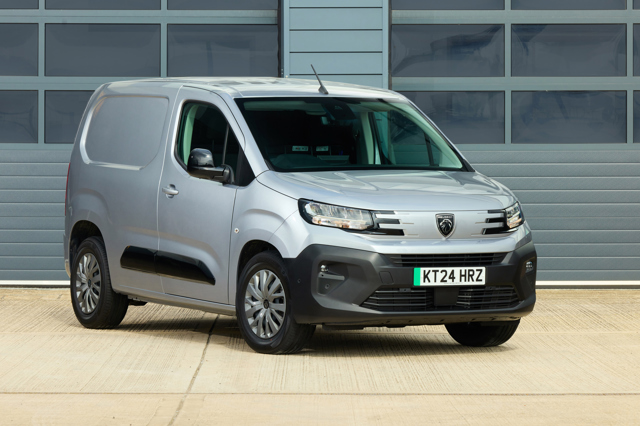
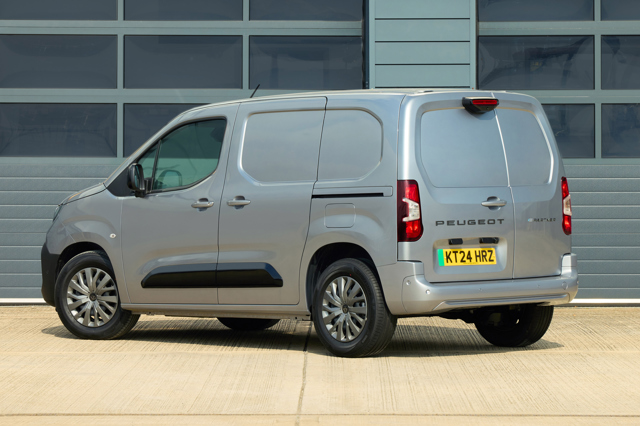
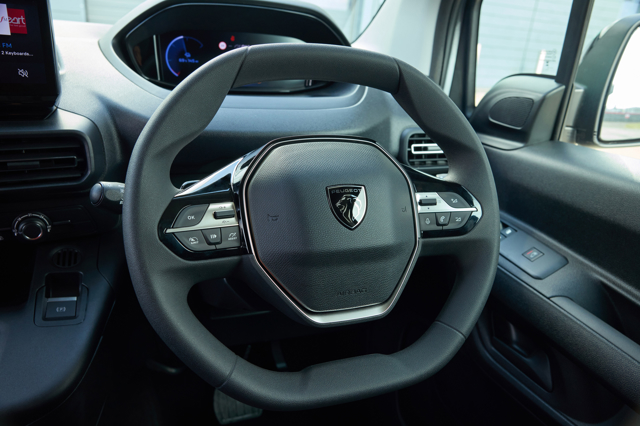
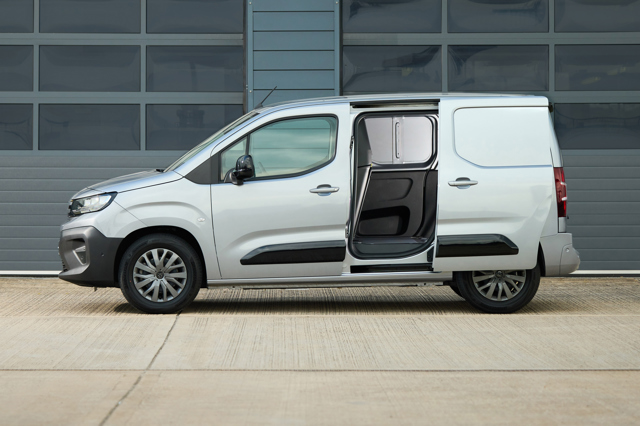
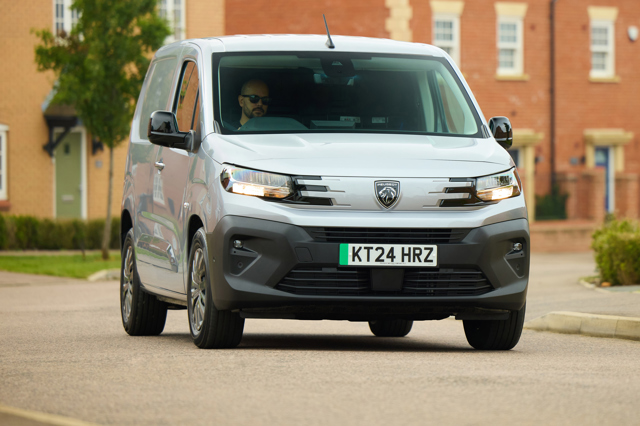
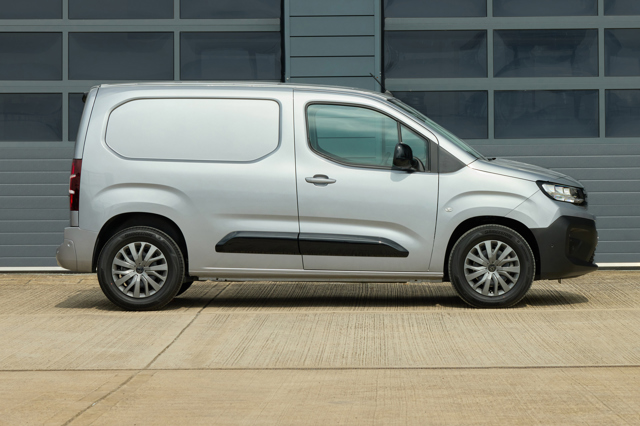
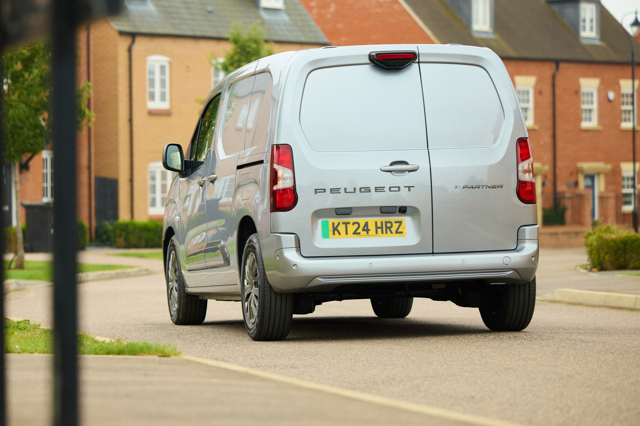
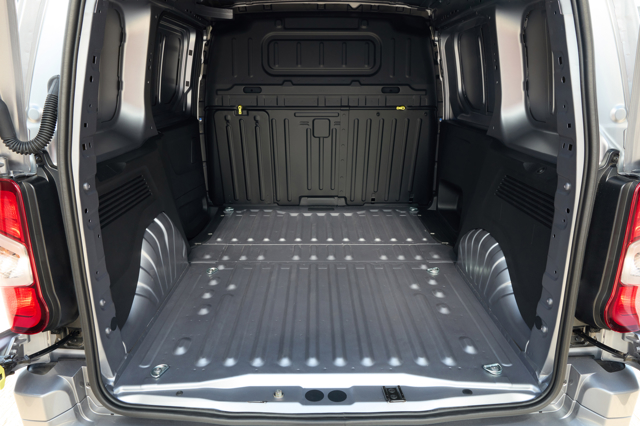
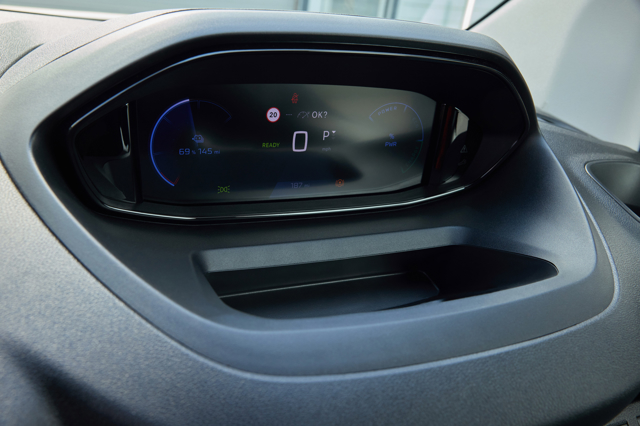
:no_upscale():format(webp)/https://cdn.uk.prod.group-mobility-trader.com/images/cas/612b283e06bdddd570ba9e67a55fbca0/ebb5ac723b7df2e73d8f88dc2877894c.jpg)

 Excellent to drive, well laid-out load bay, great interior
Excellent to drive, well laid-out load bay, great interior
 Quite pricy, lower payload then diesel models
Quite pricy, lower payload then diesel models
:no_upscale():format(webp)/https://cdn.uk.prod.group-mobility-trader.com/images/fallback/coming-soon.webp)
:no_upscale():format(webp)/https://cdn.uk.prod.group-mobility-trader.com/images/cas/612b283e06bdddd570ba9e67a55fbca0/ebb5ac723b7df2e73d8f88dc2877894c.jpg)
:no_upscale():format(webp)/https://cdn.uk.prod.group-mobility-trader.com/images/cas/d46a2e90d35bf7db56db332e27f6e8f0/24b746a2eb1d942471ee7034f44f0b54.jpg)